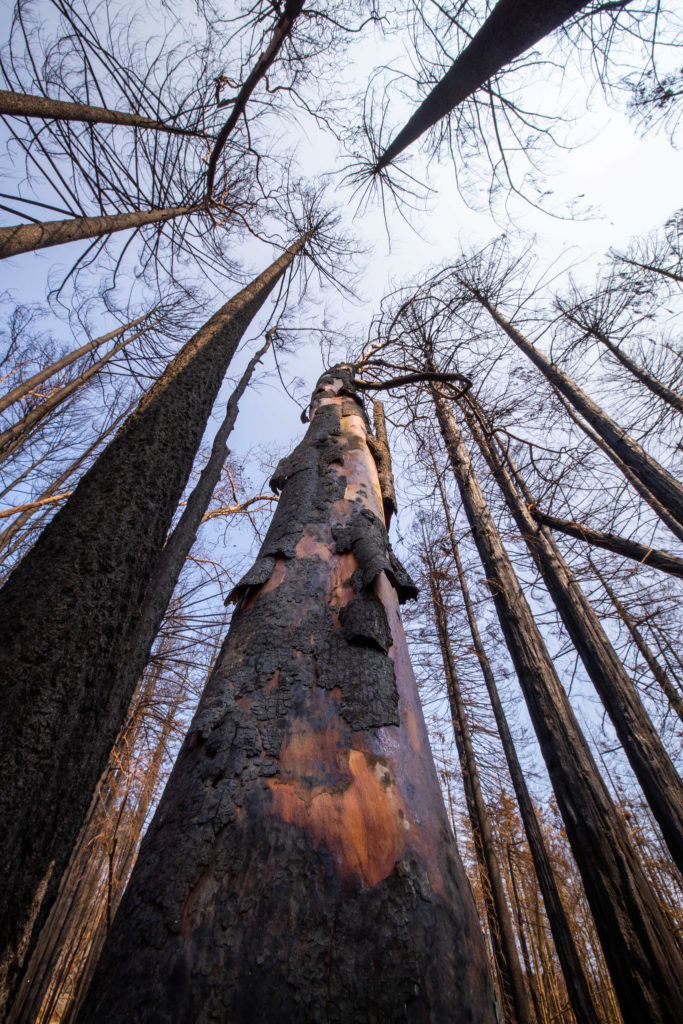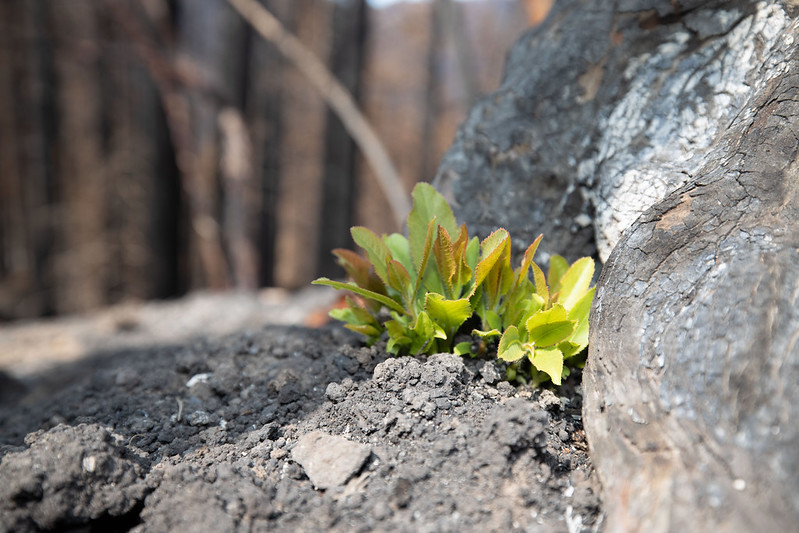While continuing recovery efforts in counties affected by wildfires, the California Governor’s Office of Emergency Services (Cal OES) proactively prepares and raises awareness with all Californians regarding the impacts and benefits of wildfires statewide.
Wildfires can be frightening and destructive to communities. But California’s forests, animals, and critters have evolved over thousands of years of wildfires to not only survive, but thrive after a fire. Most animals and wildlife either flee or burrow underground. Native trees and insects can benefit from fires to regenerate growth and foster reproduction. Listed below are a few examples of plants and insects that benefit from wildland fires.

Photographs by: Shawn Boyd
Giant Sequoias:
These giant trees depend on wildfires every couple of seasons. Fires clear out brush and low-level debris allowing sunlight to reach the forest floor, which fosters the growth of new sequoias. Because the older trees are so tall, Upper portions of the tree remain unaffected by ground-level fires.
Redwoods:
While similar to giant sequoias, redwoods are naturally resistant to insects, fungi and fire because they are high in tannins. Their thick, reddish, pithy bark also provides protection and insulation. Although redwoods flower during wet and rainy months, their germination rate is typically slow as they sprout from the base of the parent tree. Once the parent tree dies, a new generation grows using the nutrients and root system the previous mature tree established.
Knobcone Pine:
While not as tall as the giant sequoias, the knobcone pine also grows in California’s forests and drops pinecone seeds. Their reproduction is controlled exclusively by fire. The seeds require fires of up to 350 degrees or more to burn off the thick resin and release the seed within. The seeds gradually open following the heat and typically fall 1-12 hours after the fire once the ground has cooled.
Charcoal Beetles or Fire-Chaser Beetles:
Charcoal Beetles are dark-bodied insect that locates fires via sensors near their legs that detect infrared radiation. They are a wood-boring beetle that mates and lays eggs among the charred remains of newly burned dead trees. They’ve also been known to attack first responders as they crawl up anything vertical amongst the smoke and ash.
Horntail Wood Wasps:
These wasps are particularly attracted to fire-damaged trees. They are also well-known to wildland firefighters. The females will land on the selected site, survey it with their antennae, then ‘drill’ into it to lay their eggs. The Horntail Wood Wasps can also be beneficial as when they lay their eggs, they also introduce yeasts, bacteria and wood rotting fungi which can accelerate decomposition in the dead trees.

Photographs by: Shawn Boyd

